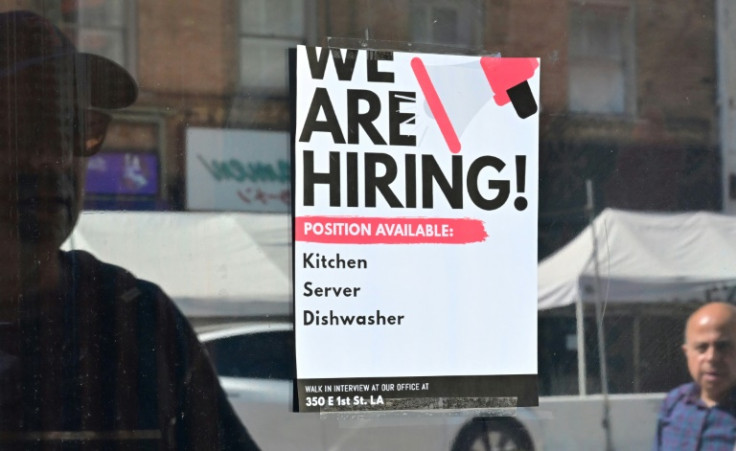Job Openings Shrank In October To Lowest Level In 2 1/2 Years

Job openings declined in October, to 8.7 million from 9.35 million in September, the Bureau of Labor Statistics (BLS) reported Tuesday. October's total is down 1.7 million from the same point last year and its lowest point since March 2021.
Total hires also decreased slightly, from 5.9 million to 5.8 million. Overall, private sector job openings declined while government jobs slightly increased.
Total separations rose, ticking up from 5.59 million in September to 6.46 million in October. At the same time, quits dropped from 3.64 million to 3.62 million, possibly a sign that workers are feeling less sanguine about their prospects in the current job market.
Openings shrank primarily in health care and social assistance, finance, insurance and real estate, while separations and quits rose in professional and business services.
Information-related job openings were a rare bright spot, climbing from 133,000 to 172,000, but they remained below their October 2022 levels. The category includes software developers, sales representatives, customer service representatives and computer systems managers and support specialists.
The report suggests a cooling labor market and potentially slower growth in the months ahead. After a string of 11 straight interest-rate hikes by the Federal Reserve starting in March 2022, the job openings rate has fallen from 7.2% to just above 5.2% this October.
"This data certainly solidifies the Fed's decision to keep rates unchanged while looking for signs of a pivot in the upcoming meeting next week," said Tuan Nguyen, U.S. economist at RSM, told CNBC. "Besides inflation, job opening data, serving as a proxy for labor demand and wage pressure, has been the Fed's top priority in recent times."
The Fed has a mandate to both promote peak employment and maintain price stability, but there is often a tradeoff between those two goals. In economics, it's known as the Phillips curve, which shows there's a negative relationship between unemployment and wage inflation.
A tight labor market means employers have to pay workers more to keep them. As labor costs rise, so does the cost of production, driving up prices. So if policymakers prioritize lower inflation, they look to create slack in the labor market -- meaning higher interest rates and higher unemployment.
Yet lower interest rates tend to disproportionately help workers without a high school diploma and Black and female workers, three economists found in a 2020 paper entitled "Heterogeneous Labor Market Effects of Monetary Policy," by Nittai Bergman of Tel Aviv University, David Matsa of Northwestern University and Michael Weber of University of Chicago.
It showed that no comparable benefit exists for white male and highly educated workers. In other words, certain populations bear the brunt of interest rate hikes more than others. The unemployment rate is now at 5.8% for workers without a high school diploma, 5.8% for Blacks and 3.3% for women, according to BLS data.
Meanwhile, the long-term unemployed now comprise 19.8% of the total unemployed population. The chances of securing work are higher for workers who recently lost jobs than for those who have been out of the workforce longer, according to research by the Federal Reserve Bank of Richmond.
© Copyright IBTimes 2024. All rights reserved.




















